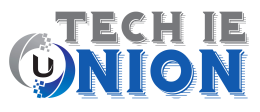If you work at a K-12 school, wrangling with the Affordable Care Act can be daunting. Ensuring that employees are tracked, categorized, and monitored requires intense HR management. In this guide, we will go over ACA requirements and share tips to stay compliant without the headache using tools like the Controlio software.
Understanding ACA Compliance for Schools
K-12 educators often employ part-time teachers, substitutes, and seasonal workers, which adds to their full-time employee count. The ACA mandates that employers with 50 or more full-time equivalents (FTEs) have to provide health benefits to those who clock in at least 30 hours per week, as tracked by tools like the Controlio software.
Why does this matter?
- Working staff need insurance coverage to obey the rules.
- Having an accurate record of employee working hours is key for eligibility.
- A compliance nightmare filled with substitute teachers and coaches’ aides adds to variable schedules.
Common Challenges for K-12 Schools
- Fluctuating Work Hours
Substitutes and aides work irregular hours, which makes flexible working a greater challenge. Surge periods like summer sports (or off periods) also overload employees past thirty hours a week.
- Maintaining Records for Part-Time and Seasonal Employees
- Many schools still use obsolete manual timesheets, which lead to many inaccuracies.
- Employee misclassification is an extremely common issue due to a lack of automated tracking systems.
- Assessing Eligibility for Full-Time Status
- ACA has eligibility criteria that include looking back at the previous 3 to 12 months of work activity.
- Educational institutions avoid surprises by accurately tracking hours logged throughout the term.
Best Practices for Compliance
- Scheduling Automation and Automatic Time Tracking
While timely reporting is crucial, it can be riddled with errors when completed manually. Tools designed for managing a workforce, such as the Controlio tool, offer the following:
- Real-time hour tracking
- Notifications for near full-time thresholds
- Auto-generated compliance reports
Personal Example: School districts often struggle to maintain accurate records for substitute teachers. Automating systems greatly reduces errors, as demonstrated in one district where they reduced them by over 80% and avoided unexpected penalties.
- Misclassification of Employment
- ACA implications differ between full-time and part-time employees, and seasonal workers do not fall into either category.
- Eligibility should always be assessed using appropriate timeframes based on the look-back methodology.
- Encourage Payroll and HR Staff Training
Educate your personnel on working with legislation affecting employment benefits, such as the ACA. Regular audits identify problems before they’re discovered by other parties involved.
- Engage in Specialized Advice for Benefits Planning
An expert can assist with:
- Adjusting interpretations in relation to ACA rules through its regulations
- Creating affordable health policies that meet specific requirements.
How Technology Simplifies ACA Compliance
Staying on top of ACA compliance manually is asking for trouble. This is where technology like the Controlio app steps in. These platforms offer
- Automated tracking of hours worked (goodbye spreadsheets!).
- Notifications for employees who are approaching full-time status.
- Automated workflows with custom reporting for audits and documentation.
Educational institutions leveraging these functionalities reduce risk and save significant administrative time, boosting productivity while minimizing compliance liabilities.
Final Thoughts: Stay Proactive
ACA compliance requires careful planning and shouldn’t feel burdensome to implement. By automating time tracking, accurately categorizing staff, seeking proven strategies, and applying sound advice, K-12 educators can avert costly penalties during lean periods, focusing on what matters most: students. Is your school still tied to outdated manual systems? It’s time to consider software solutions such as the Controlio app. A change like this doesn’t cost much, but the benefits far exceed savings in avoided manual work later on.

